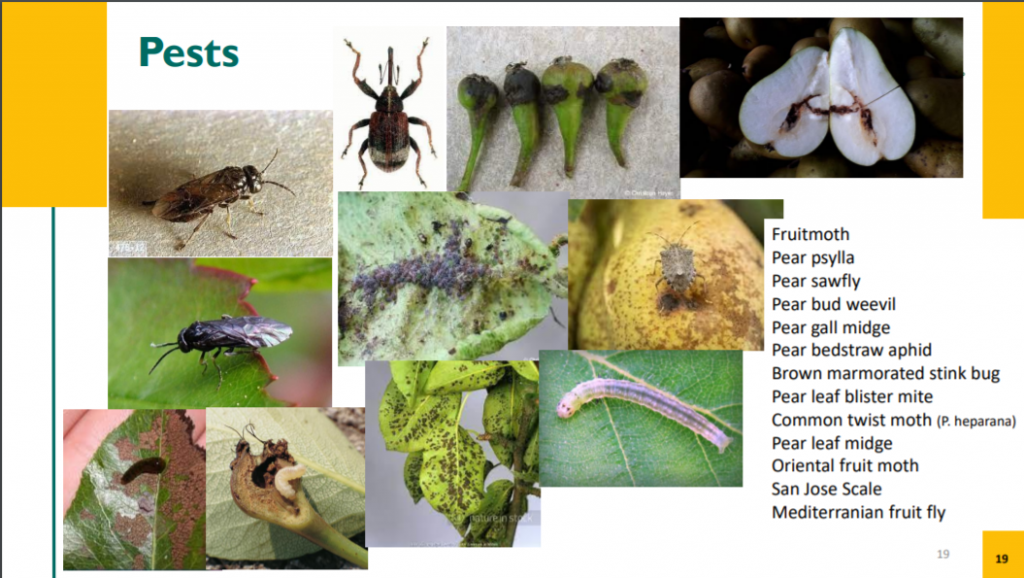Workshop on the current problems and strategies in pest and diseases control in organic pears production in Europe
On October 19th, the european project BIOFRUITNET held a workshop on the current problems and strategies in pest and diseases control in pear production in Europe. 11 organic pear growing experts from different european countries gathered around Gerjan Brouwer from Delphy (advisory service from the Netherlands) to assess and complete the results gathered during the survey of 250 fruit growers implemented in 2020 across Europe. A debate has been generated in which the experts enriched the information gathered from BIOFRUITNET on the strategies to fight pest and diseases the most used in their countries.
The most important diseases that affect pears are Pear scab (black spot of pear) which is very important in the Netherlands, Belgium, Germany, Italy, Switserland and Austria; followed by Fire blight (Erwinia amylovora) with a large presence in Switserland, Italy and Denmark and the Pseudomonas highly present in Germany, The Netherlands, Belgium and Germany mainly on the variety Xenia. Another important disease, but less distributed across Europe is the Fruit cancer (Nectria galligena), with a strong presence in the Netherlands, Denmark and Northern Germany; Stemphylium (brown spot of pear) that mainly affects France and Italy; and Pear Decline with importance in Germany and Austria.

The workshop dealt with aspects related to the most used control techniques in each country, the discrepancies identified, problems detected, and specific actions implemented in each country.
According to the results of the questionnaires and the experts, the most important pests in the targeted countries are: pear gall midge, codling moth, pear sawfly, and stinkbugs (native stinkbugs and brown marmorated stinkbug).

The most relevant aspects of the control techniques used are the precautionary measures, the alternative and innovative methods, knowledge gaps and needs, etc. were discussed, and the results can be found in the workshop presentation.
Respect the importance of criteria for planting or breeding varieties, the most relevant are pest and disease susceptibility, fruit quality and variations in production. And the importance of criteria for planting or breeding rootstock is the vigour, the variation in production and the resistance to climate change.
Between the 10 varieties cultivated in all the countries, Conference and Williams are the varieties with more presence in the territory under study and the main rootstocks used include Quince C, Quince (not specified) and BA29. The criteria used in the selection of varieties are the susceptibility to diseases and pests, the quality of the fruit and the variations in production. For rootstocks, the most important factors are the vigour, the yield variation, and the resistance to climate change.
General solutions proposed
One of the main solutions to make crops more resistant to pests and diseases is to increase the number of varieties and to use those that are more resistant and will be able to cope with the new climatic scenarios with a higher probability of success. For this strategy, it is important to work on the introduction of new concepts in the market as the need to increase fruit varieties to improve the biodiversity and resilience of these crops to climate change, promoting responsible consumption by consumers. Varietal diversity should be part of organic production and a sign of quality.
Producers must agree to introduce a common strategy based on growing more varieties as its only way to make organic fruit growing sustainable in the new scenarios.
Greater diversity will resist to pests and diseases. For this strategy to be successful, it is essential that the whole production chain is involved in the measure and that there is a proper balance between market pressure and organic production yield.

